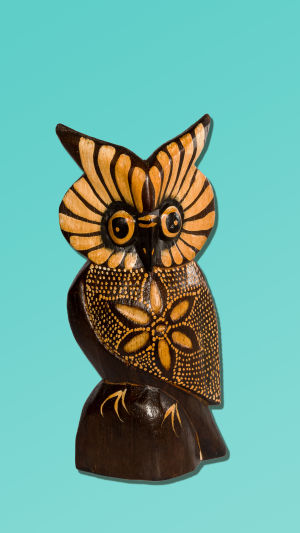A new archaeological paper published in Scientific Reports, an academic journal under Springer Nature, believes that owl-shaped stone carvings in the Iberian Peninsula of Europe about 5,000 years ago may have been toys made by children.
The findings could provide new insights into how children in ancient European societies used artifacts.
According to the paper, about 4,000 owl-shaped carved stone tablets (with two carved circles as eyes and a body outline below) have been found in tombs and pits across the Iberian Peninsula, dating back to Bronze Age, 4750 to 5,500 years ago. Previously, it was speculated that these owl ornaments may have some cultural significance.
The corresponding author of the paper, Juan J. Negro of the Spanish Higher Research Council and collaborators re-examined the traditional view and concluded that these owl-shaped stone carvings were actually carved by young people according to the local owl species. They were possibly made as dolls and toys.
They evaluated 100 of the ornaments, scoring them (on a scale of 1-6) based on how many of the 6 owl characteristics they exhibited (eyes, tufts, feather patterns, flattened face, beak, and wings).
They also compared the owl plaques with 100 modern owl images drawn by children aged 4-13 and observed many similarities in the depictions of owls. As the child grows older, the painting about owls becomes more similar and more skillful.
The authors observed two small holes at the top of many of the owl ornaments in this study, which do not appear to be functional enough to be hung on strings and show no signs of corresponding wear. These holes, they reasoned, could house feathers, mimicking the tufts of feathers on the tops of certain native owl species, such as the long-eared owl.
The authors concluded that these 5,000-year-old owl ornaments were not necessarily ritual objects carved by skilled artists, and many may have been made by children, which became more and more similar to owls as carving techniques improved. It may also represent an aspect of childhood behavior in Bronze Age societies.
If you also like owls, you might as well try to make an owl ornament yourself.
Material:
white paper plate
pigment
scissors
floral cloth
black buttons
sponge paper
white latex
Production steps:
Step 1: Cut the white sponge paper into a circle, and cut a few more for later use. Cut the unnecessary floral cloth into irregular small pieces for later use.
Step 2: Paint brown or other colors on a white paper plate. The color of the paint can be freely matched.
Step 3: Then paste the floral cloth on the paper plate, paste the white sponge paper on it, and then paste the eyes of the black button on it. Don't forget to cut a triangle mouth for it.
Step 4: Attach a length of string to the back of the paper plate to hang the adorable owl.





